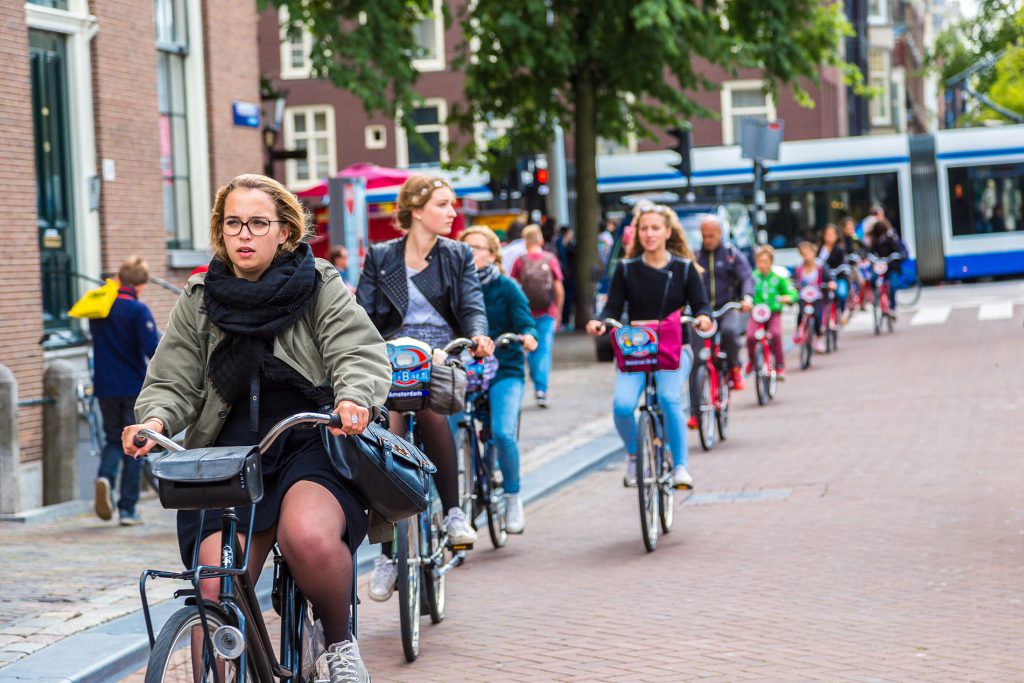The Dutch Way of a Smart City
With Smart City Amsterdam (ASC) the Dutch capital has created an innovation platform which is constantly working on innovative ideas and solutions for urban issues.
As a bicycle nation, the Netherlands have a pioneering position concerning green transport. However, Dutch smartness should not be limited to the way citizens move, but expand into other areas. Therefore, the capital Amsterdam has initiated Smart City Amsterdam (ASC), a platform for innovation, smart ideas and sustainable solutions for urban issues. “ASC believes in a liveable city where people can live and work pleasantly.” Brought together by ASC, businesses, residents, the municipality and knowledge institutions constantly face upcoming challenges in order to implement Amsterdam’s smart goals, which are not modest. Ensuring liveability in the metropolitan area, sustainable economic growth, and developing new markets are just some of the goals. To reach these, working together is a good way into a smart future.
Smart through networking
Connect – accelerate – strengthen, this is the way Amsterdam is approaching its smart aims. Therefore, ASC brings together municipalities, various partners and residents to enable the exchange of ideas and to face challenges together. This cooperation helps find and implement smart solutions that fulfil individual needs. In this process the ASC platform helps connect the right stakeholders, accelerate the kick-off of projects and tackle the challenges the city is facing.

Networking is not only an advantage for the development of the city. The involved organisations and companies benefit as well. They can promote themselves on the platform and profit from shared knowledge.
Facing Challenges in different Areas of the Every-day-life
Amsterdam is the European city with the most diverse population in Europe. Moreover, millions of tourists come to visit the city every year. Therefore, Amsterdam has to find solutions to stay attractive for everyone: for the versatile group of residents as well as the visitors. A lot of people means a lot of waste. Amsterdam’s households alone produce 550 kilos of waste per year, with the visitors’ garbage it would be even more. To minimise waste and other pollution, the city is moving from a linear to a circular economy where resources are integrated in cradle-to-cradle circles. In this way, precious resources do not end up on landfills but can be reused sustainably. Sustainable handling of resources also affects transport and mobility.
It is about reducing congestion and pollution as well as increasing safety and efficient use of public space. Regarding the fact that 30% of the cars in Amsterdam are used less than once a week, car sharing can be a good way to use precious resources. All in all, a smart city is not just a matter of technology but requires smart citizens as well. Therefore, Amsterdam is developing smart educative programmes and enforcing the cooperation between residents and municipalities. Since a smart governance counts on the residents’ participation in order to develop a healthy social and economic climate.

